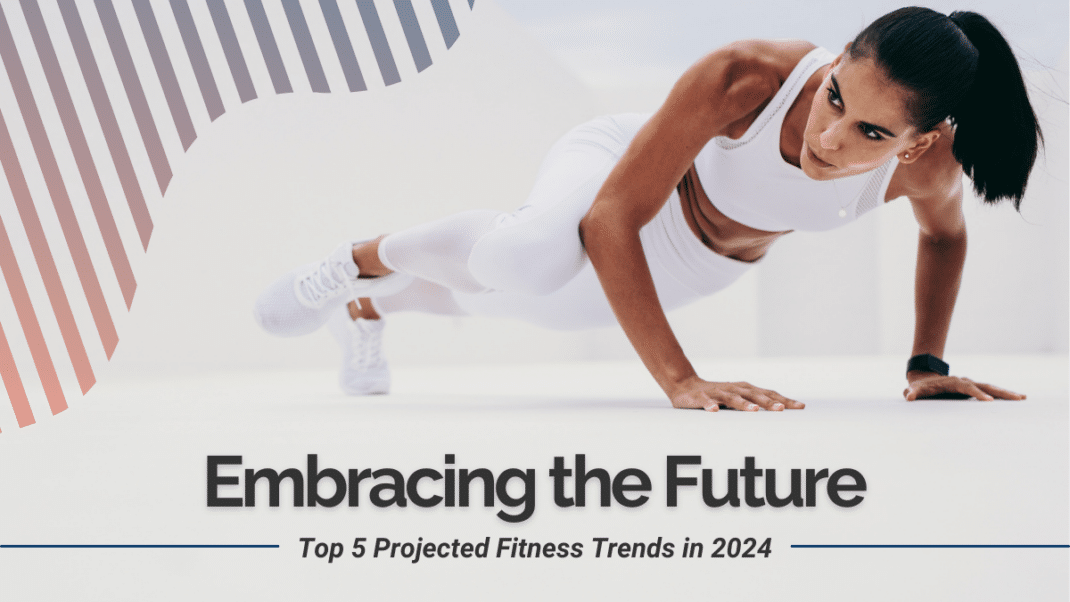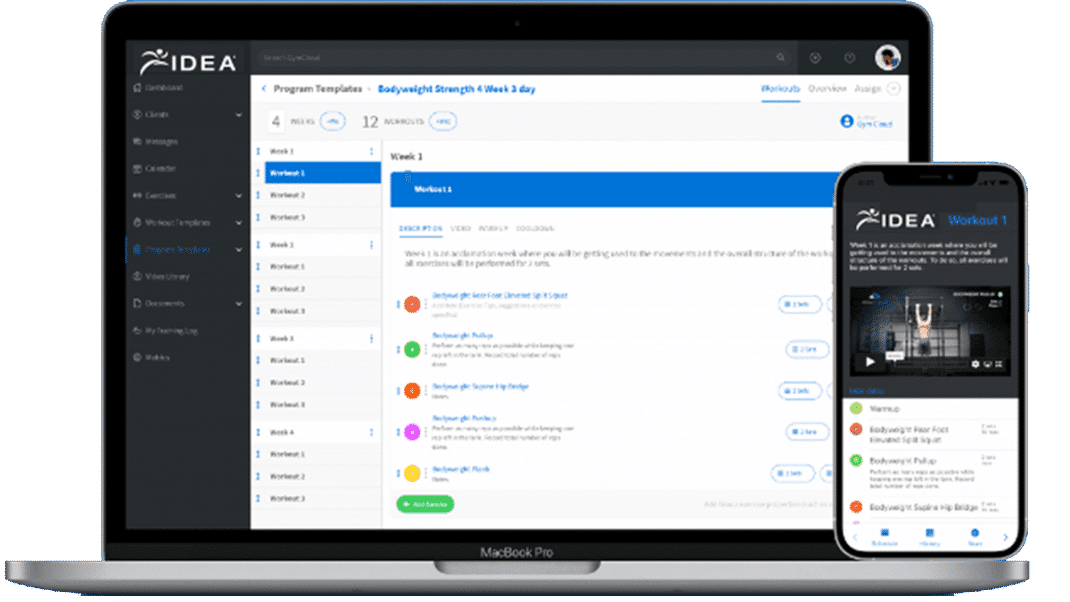Facility Design and Construction 101, Part Three
Find out more about how to finalize important details in your new space.
In Part Two of this series, we discussed planning, standards, supplementary areas and timelines for fitness facility design and construction. In today’s final installment, we review fitness flooring, lighting, stereo systems, fitness equipment and signage. Please note that while this series broadly outlines the keys to planning and building group fitness and personal training spaces, it is no substitute for guidance from experienced facility design and construction professionals.
Flooring
Initial cost, maintenance, performance, visual appeal and durability are factors to consider when you’re choosing your facility’s flooring (Walker & Weaver 2009). The type of floor should fit the type of activity. Many fitness professionals recall teaching pivoting dance moves on carpet or high-impact aerobics on concrete; both of these surfaces may increase the chance of injury. If your classes involve high-impact exercises, a vendor can help you choose a wood floor and subfloor that meet DIN (Deutsches Institut für Normung, developed in Germany) or EN (European Norm) standards. These standards, often used in the United States, rate a floor based on its force reduction, shock absorption, area indentation and other criteria (Bynum 2006; Walker & Weaver 2009).
If you’re outfitting a cycling studio, however, a rubber floor may be preferable because the cleats on members’ cycling shoes can chip wood flooring. Make sure you choose the best rubber surface—a covering that is too porous may absorb sweat and trap odors that are hard to remove. If you have one multipurpose room for all of your classes, a spring-wood floor with individual rubber mats under each bike is a feasible combination.
Carpet may be appropriate for areas reserved for mind-body activities, but you’ll need to think about how to clean this flooring if members sweat when using it. Lucille Allen, owner of Bikram Hot Yoga Mobile in Mobile, Alabama, prefers carpet in her studios. “We chose a carpeting product called Flotex® because it is antimicrobial and used in hospitals and nursing homes. It is clean and offers a bit of nap, so it’s not slippery.”
Lights and Mirrors
Using windows to let in natural light can reduce electrical costs, but be mindful of where you install those windows. East-facing windows may let in direct sunlight that is too bright and glaring during early-morning classes. Also, try not to install mirrors directly across from the windows. Direct sunlight reflecting in the mirrors will add more glare in your customers’ faces. Window treatments let you control natural lighting, though they will add to your cost.
Avoid the temptation to eliminate mirrors in order to save money; visual learners rely on mirrors to check their form. Yet many people do not want to see their reflections. Ensure that your exercise space has some walls with mirrors and some walls without them.
If you use a multipurpose room for various fitness classes, add a dimmer rather than a single on/off switch. Bright lights may be appropriate for a cardio class, but they can be too intense for yoga. A dimmer lets you address the lighting needs of any class. In addition, a motion sensor on lights can save electricity costs and make your facility a little greener.
When choosing ceiling height and lights, ensure that the ceiling is high enough for particular classes. A fitness studio for cardio classes where the members are doing medicine-ball tosses may need a higher ceiling than is called for in a space used only for mind-body practices. But don’t go too high; you want easy ceiling access for changing light bulbs.
Stereo and Microphone Systems
An uncooperative stereo or microphone can aggravate any fitness staff. Buying and installing a good sound system may cost several thousand dollars up-front, but choosing a quality product at the beginning may reduce sound problems in the future. Make sure instructors can use both CDs and MP3 players. Ask your staff if they need a CD player with pitch control; many branded classes now have predetermined music that’s preset to the required speed.
When choosing a microphone, check the availability of replacement parts from several vendors, and avoid buying a brand of microphone with hard-to-find transmitters and headsets. If you have a large number of instructors or classes every week, these parts may need to be replaced often.
Headset microphones can be wired to a transmitter worn at the waist, or they can be attached directly to the headpiece. Ask your instructors which type they prefer, and ask vendors for a trial period before committing to purchase. Some instructors find the wired waist pack cumbersome when teaching classes. However, the headset transmitter is more susceptible to sweat from instructors’ heads and signal interference from their hair, potentially leading to no sound at all.
Also, be sure to purchase microphone windscreens for each instructor—and clean or replace them regularly. Windscreens are inexpensive, and giving instructors their own reduces the spread of germs. If you’re using a waist transmitter, purchase extra microphone belts so instructors whose class begins immediately after another cardio class do not have to wear a sweaty belt.
Fitness Equipment
Choosing equipment is one of the more exciting aspects of planning a new fitness studio. Should you get equipment that meets the latest trends, or do you go with tried-and-true treadmills and dumbbells? As noted in part one of this series, survey your membership at the beginning of the project to determine the fitness services and classes they want. Base your choices on their responses, but be sure to anticipate the trendiness and storage requirements of each type of equipment. You do not want to be stuck with unused, space-hogging equipment a few years from now.
Use your imagination when storing smaller equipment for group fitness classes; for example, a wall-mounted rack for stability balls can save you room. (Be aware that the equipment needs to be mounted at a height that shorter people can reach.) If you have several fitness studios, choose rolling bins and racks to help you move equipment between rooms. Place resistance bands and jump ropes on hooks to discourage tangles. Require members to bring their own yoga mats, so you don’t have to store them or be responsible for keeping them clean.
When choosing larger pieces of equipment, tell vendors your budget and ask to try a few models before committing to buy. For example, indoor cycles can vary on their seat and handlebar adjustments, seat width and flywheel placement. Ask for a trial period, so members can test the equipment. Get their feedback; after all, they—not you—will be the primary users. If vendors will be bidding for the privilege of providing equipment, make sure you research equipment brands and models before the bid process starts.
Signage
Your members will be looking around the facility for information. Signs can point to entrances and exits, offer instruction and provide safety information. The message and placement of some signs may be regulated by local, state or federal law (Grantham et al. 1998). Policies and hours of operation are some of the permanent items to detail in the facility’s signage. Will you have special events or announcements? For those, purchase a bulletin board or a dry-erase board so you can post and change messages easily. Key questions to answer when you’re choosing graphics and signs include these:
- What image will the sign depict?
- Where will the sign be placed and installed?
- What is the viewing distance, and how long will it take to read the sign? (Hypes 2009)
This three-part series reviewed some key components in group exercise and personal training facility planning and design. Remember, no matter how well you have planned and budgeted, there will always be some glitches at the end. A newly installed stereo system may not work, or a treadmill’s electronic display may not function after a few months. Keep all warranties and receipts, and request replacements.
Most of all, enjoy your new space!
Are you a club owner or manager? Gain, train and retain world class staff with the fastest growing health club software in the world: https://www.ideafit.com/clubconnect
References
Bynum, M. 2006. A new, comprehensive standard tests the DIN Guideline. Athletic Business. www.athleticbusiness.com/a-new-comprehensive-standard-tests-the-din-guideline.html; retrieved Sept. 10, 2013.
Grantham, W., et al. 1998. Health and safety guidelines. Health Fitness Management (pp. 297-325). Champaign, IL: Human Kinetics.
Hypes, M., et al. 2009. Graphics and signage. In Thomas H. Sawyer (Ed.), Facility Design and Management for Health, Fitness, Physical Activity, Recreation and Sport (12th ed., pp. 97-104). Urbana, IL: Sagamore.
Walker, H., & Weaver, T. 2009. Indoor surfaces. In Thomas H. Sawyer (Ed.), Facility Design and Management for Health, Fitness, Physical Activity, Recreation and Sport (12th ed., pp. 105-20). Urbana, IL: Sagamore.
Sarah Schrenk, MS
I have worked in fitness for ten years. I used to be a biologist and found it very unfulfilling. After a few years of teaching group fitness classes after work, I returned to school to get my master's degree in Clinical Exercise Physiology. I have experience working one-on-one with many types of special populations and can teach many group fitness formats. Currently, my full-time job is the managing the group exercise and personal training program at a university recreation center. I'm also adjunct faculty at the university and a presenter for a national certification company.






